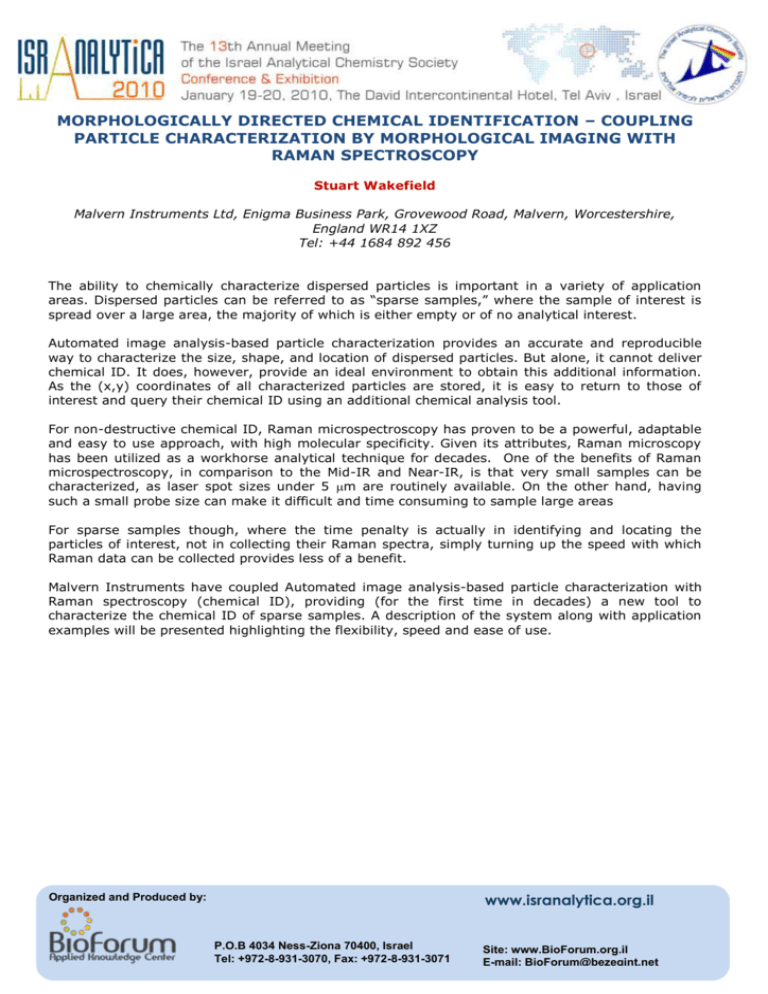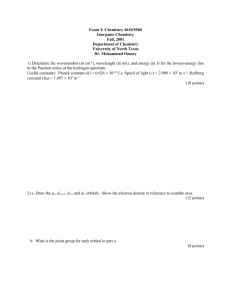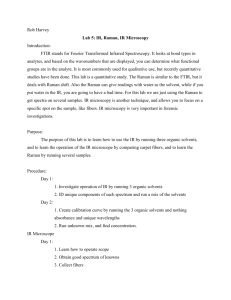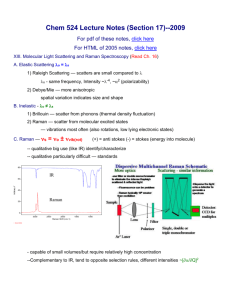morphologically directed chemical identification
advertisement

MORPHOLOGICALLY DIRECTED CHEMICAL IDENTIFICATION – COUPLING PARTICLE CHARACTERIZATION BY MORPHOLOGICAL IMAGING WITH RAMAN SPECTROSCOPY Stuart Wakefield Malvern Instruments Ltd, Enigma Business Park, Grovewood Road, Malvern, Worcestershire, England WR14 1XZ Tel: +44 1684 892 456 The ability to chemically characterize dispersed particles is important in a variety of application areas. Dispersed particles can be referred to as “sparse samples,” where the sample of interest is spread over a large area, the majority of which is either empty or of no analytical interest. Automated image analysis-based particle characterization provides an accurate and reproducible way to characterize the size, shape, and location of dispersed particles. But alone, it cannot deliver chemical ID. It does, however, provide an ideal environment to obtain this additional information. As the (x,y) coordinates of all characterized particles are stored, it is easy to return to those of interest and query their chemical ID using an additional chemical analysis tool. For non-destructive chemical ID, Raman microspectroscopy has proven to be a powerful, adaptable and easy to use approach, with high molecular specificity. Given its attributes, Raman microscopy has been utilized as a workhorse analytical technique for decades. One of the benefits of Raman microspectroscopy, in comparison to the Mid-IR and Near-IR, is that very small samples can be characterized, as laser spot sizes under 5 m are routinely available. On the other hand, having such a small probe size can make it difficult and time consuming to sample large areas For sparse samples though, where the time penalty is actually in identifying and locating the particles of interest, not in collecting their Raman spectra, simply turning up the speed with which Raman data can be collected provides less of a benefit. Malvern Instruments have coupled Automated image analysis-based particle characterization with Raman spectroscopy (chemical ID), providing (for the first time in decades) a new tool to characterize the chemical ID of sparse samples. A description of the system along with application examples will be presented highlighting the flexibility, speed and ease of use. www.isranalytica.org.il Organized and Produced by: P.O.B 4034 Ness-Ziona 70400, Israel Tel: +972-8-931-3070, Fax: +972-8-931-3071 Site: www.BioForum.org.il E-mail: BioForum@bezeqint.net











